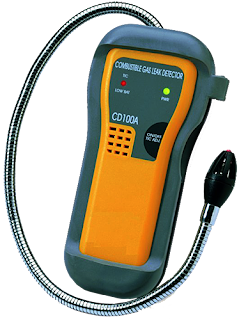By 2028, The Global Gas Leak Detector Market Is Expected To Be Worth $4,718.5 Million USD
 |
| Gas Leak Detector Market |
Leak
detectors, also known as sniffers, are a type of instrument that is
specifically designed to detect small leaks in enclosed gas systems. In
industrial or commercial settings, the use of pressurized gases in pipelines
and vessels is very common. Gas leak detection offerings are primarily required
for health purposes. Combustible gases have the potential to start fires or
cause explosions in homes and workplaces, injuring living beings.
Long-term exposure to petrol leaks can also
cause health problems. Some petrol leaks are even deadly in silence. The growing oil and gas industry, improving regulatory structure for workplace safety, and
advancement in gas infrastructure are the key determinants driving gas leak
detector sales.
The global Gas
Leak Detector Market was worth US$ 3,138.3 million in 2020 and is expected
to reach US$ 4,718.3 million by 2028, growing at a 5.6% CAGR between 2021 and 2028.
The
demand for gas leak detectors is expected to rise as more industrial gases such
as argon, helium, and nitrogen are used in various industrial applications.
Furthermore, rising gas usage in HVAC and refrigeration systems for automotive
applications will provide significant opportunities for market participants in
the near future.
The
global Gas Leak Detector Market accounts
for 1 to 3% of the global industrial automation controls and products market. Growth
during the historical period was aided by an increase in the use of gas
detectors in industrial spaces in response to the risk and serious harm caused
by gas leaks. Toxic gas monitoring is critical for natural gas power plants,
chemical processing plants, oil and gas pipelines, and refrigeration facilities
worldwide.
A
failure to contain these poisonous gases can lead to excessive corrosion,
environmental damage, and, most importantly, injury and death. Many hazardous
substances lack adequate physiological warning mechanisms, allowing them to
overwhelm victims before they even realize they are there. Organizations use
petrol detection systems to protect workers and plant assets, as well as to
protect the environment and the public.
Key
Players - The Safety Company, Honeywell International Inc., Drägerwerk AG
& Co. KgaA, Testo SE & Co. KGaA, PSI Software AG, BRIDGER PHOTONICS,
Siemens, Xylem Inc., Emerson Electric Co., Schneider Electric SE, Industrial
Scientific, Yokogawa Electric Corporation, and Halma plc.
Comments
Post a Comment